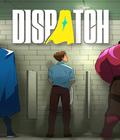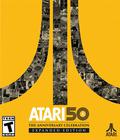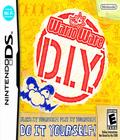Back in the day, when Nintendo wanted to introduce a new gaming idea to the public, it would use Mario to help push the idea. Nintendo's most famous character would be featured front and center for things like changes to the platforming formula, educational titles, character-based sports, or general creation software. The plan had worked very well until the Game Boy Advance era, when the concept of the micro-game was introduced with the help of Wario and his cast of friends. WarioWare's offbeat humor and lightning-quick gameplay were instant hits with the gaming public at large, and Mario's greedy rival soon became the go-to character for introducing new gaming ideas to the public. The second GBA game introduced accelerometer-based gaming to the portable public. Nintendo used the first DS game to further emphasize how touch gaming could be done, and the Wii game showed off everything that can be done with the system's unique controller. It's no surprise, then, that the company once again chose Wario to introduce something new to its fans. What is surprising is just how different WarioWare: D.I.Y. really is.
As far as plot goes, this one is about as straightforward as the rest of the games before it. Dr. Crygor, resident mad scientist of Diamond City, created a new machine called the Super Makermatic 21 after having a nightmare about video game sprites exploding from his television. The machine's sole purpose is to make the process of video game creation easy enough for anyone to do. The machine was impressive enough that Wario, who had come to the lab wanting his broken TV to be fixed, got one for himself. Unfortunately, his whole game staff had left him. As the new manager of the local game shop, Wario has hired you to help him complete his games and maybe even make a few of your own, if you're so inclined.
The game is split up into four major sections, not including the game options. The D.I.Y. Shop is the shop you help run. It is also where you get to play all of the games, though they aren't unlocked in a manner familiar to series veterans. Each day, only one character's category gets unlocked. Players then have to put it in the game blender and play through the category normally to unlock individual games for individual days. It's only after five days that the library is available for unlocking, and unless you're patient, those will be the longest five days you'll have playing the game. This is also where you'll be able to play games you make and download (more on that later). Outside of the games, you'll be able to play MIDI music albums and read small four-panel comics drawn on the system by some fairly well-known Japanese artists. You'll also be able to see a daily sales chart that graphs the fictional popularity of the games you have in stock.
Aside from the unlocking method, one thing that fans will be quick to point out is that this game just isn't as packed as other WarioWare titles. With only 90 microgames to play, this ties the DSiWare version for being the smallest that the series has offered. As a result, players who are going for just the games will be able to get through this title rather quickly, a fact that can disappoint those who are looking for something substantial after the first DS game.
WarioWare, Inc. is where players can do one of two things. The first thing, and probably the most important, is the ability to take tutorials on the various aspects of creating your comics, albums and games. The basics of each are pretty simple to learn, but the advanced techniques prove to be invaluable, especially for album and game creation. Because the tutorials get into some depth and try to explain just about every possible aspect, even for the starter tutorials, expect to spend at least an hour or more going through them all. For those who would rather experiment with the tools than let the game handhold them through the process, you're out of luck. In order to do anything creative, you have to at least go through the basic tutorials for each category before you can go make your own stuff. The other activity you can partake in is drawing. Wario offers games that simply need artwork done before they can get published and played. Drawing up whatever is suggested helps bring the game to publishing and gives you the chance to play it for yourself. Of course, drawing is mandatory but drawing exactly what's asked for isn't. You could, for example, draw a hot dog instead of the required shark car for a microgame and still have it be accepted for publishing. In a way, this forces gamers to create something even if they don't want to start making a game from scratch.
D.I.Y. Studio is where you'll be most likely spending a bulk of your time. This area contains a message board with plenty of hints and other tidbits of information concerning game creation and publishing. The hints are set up exactly like a regular message board, with small running conversations and now-classic traits you would expect, like shortened "l337-speak" and classic lines like "picture or it never happened." Nintendo's localization team has always had some funny writing when given the chance, and this game gives them a perfect venue to show it off so it is worth reading every once in a while. You also have a medal case that fills up every time you earn an achievement. Unlike other DS games that use the system but give you nothing in return, WarioWare: D.I.Y. uses the medals as an unlocking method for the pre-made albums in the game. For obsessive collectors, this validates their cause and gives them one more reason to try everything and collect everything in sight.
The real draw to this section, however, is the Super Makermatic 21 machine, which is what you'll use to create your comics. You are limited to four panels of black-and-white art. Considering that most newspaper comics have that length and limitation anyway (Sunday morning notwithstanding), you never feel like your creativity has been stifled. You'll also use this to create your albums, which can be two to three minutes long and wholly composed in MIDI. Again, on paper, this seems limiting but when you see the various MIDI instruments and sound effects you have at your disposal, you'll realize that there's some depth to be had here. While these sections are nice, they become complementary to the real heart of the title: making your own microgames.
Game creation is rather in-depth, even if they present the whole thing as a few different, simple steps that need to be followed. The first step is to create the graphics. You can choose from some premade backgrounds, and you can choose to stamp down some everyday objects such as bushes and clouds, but for the most part, you'll be using your stylus almost exclusively. Your color palette and tools are more comparable to what you get in Microsoft Paint than a more robust program like Gimp or Adobe Photoshop, but it's enough to get the job done. Paint buckets, shape creators, and erasers and markers of different thicknesses are here, and each tool has enough options to get quite a bit out of what you can create. Static objects aren't the only things that you're allowed to create. A maximum of four user-created objects, not counting stamps, can be in your game and each object has up to four frames of animation with it. It won't be considered a masterpiece, but with your games lasting only a few seconds, looping four frames of animation gets the job done well enough.
The next step is music. The method for creating a game soundtrack is the same as album creation, except that you're given a strict limit based on how long your game is. You're given five different instrument tracks with which to lay down your beats as well as a rhythm track. By default, you have the traditional instruments at your disposal, such as drums and a piano, but you can always change the theme by using completely different instrument sets. Drums can be replaced by steel drums while pianos can be replaced with trumpets, other percussion instruments, or even 8-bit sounds if you choose to re-create some famous game scenes. Like the paint set for the graphics, the seemingly limited set hides plenty of depth, giving you the ability to create just about any track possible within the confines of the MIDI format.
After creating the microgame's look and sound, its time to create the game rules. Game length has to be created, namely whether this is a normal length game of 5 minutes or a longer 10 second one like a boss fight. You have to then start giving every object a rule such as what it will be doing when the game starts or what it should do when the object gets tapped. Since this is a game, you also have to list out the conditions for winning the game you're making. Rule making also means selecting sound effects that will play once an object obeys that given rule. Like the music, the sound bank is rich with common effects like barking and car screeches to more 8-bit centric ones, namely from the original Super Mario Bros. Rules are conducted by following the "if A happens, B happens" scenario. For example, you can make up a rule stating that if the car is tapped, it stops, The rule about effects are then added on top of that and any other sub-rules can be added as well. The game does a pretty good job of giving you plenty of good options to choose from once part of a rule is selected and presents it in a Mad Libs sort of way where filling in the blanks is good enough to make the rule happen. Of course, you need to know if it all works out according to plan and this is where the testing can occur. There's no abrupt switch between testing and rule creation so there's no down time between modes. Of course, if you like the rules but suddenly hate either the music or art used, it's easy to go back and forth between categories while you're creating your microgame.
The final step in the game creation process turns out to be the easiest one: publishing. Once you have all of the assets in place, you can name your game and give it a cool description. You can also name the game company that publishes your title to make it a bit more personal. Selecting the cartridge shape comes next, followed by the selection of the pre-made label and colors for both pieces. Once all of those are selected, you have to determine if this will be a title that anyone can borrow ideas from and edit or if you want no one else fiddling with the internals but yourself. Once it gets packed, it gets sent to the D.I.Y. Shop, and you're free to make another game.
In short, game creation in the title is amazing. It is made even more amazing knowing that every single game in this package was made with these same tools, and all of those games can be dissected so you could further learn how to make the best possible chunk of fun with the instruments at your disposal or modify them to your own personal liking. As good as it is, though, one can't help but point out the system's few flaws. The first, which is discussed later, is the control method used for the games you create. The second flaw is that you can't create any sounds for your games via the system microphone. The game may have a pretty impressive sound bank, but since these games are your own creations, it would have been nice if you could add your own effects to make it more personal, even if those effects were simply your voice recordings instead of hooking up a PC for more professional effects. The other flaw is that you can't import your own graphics. Fans of the series will no doubt remember some of the mini-games that manipulated real photos of dogs and other objects and animals for use in their game. Having the ability to use real photos would have been useful to vary the look of the game, and it would have benefited those who want to create something but don't have the artistic ability to draw something appealing. It hurts even more for DSi and DSi XL players, considering that their consoles have both cameras and SD card slots, which are useful and convenient for grabbing photos.
Finally, there's the Distribution Center. You can transfer your games, comics and albums from one DS system to another locally. If you picked up WarioWare: D.I.Y. Showcase for the Nintendo Wii via WiiWare, you could transfer all of those items to your Wii console as well and even play your created games on the Wii using the Wii Remote in place of the stylus. The WiiWare program isn't free, but you do get your hands on some exclusive creations this way, giving you something else to look forward to aside from using it as a storage center and a larger substitute for the DS.
Then there's the use of the Nintendo Wi-Fi system, where things simultaneously become robust and complicated. The Wi-Fi connection houses your warehouse where you can store your own creations from all three categories as well as access those from others. Unfortunately, the Friend Code system comes into play so unless you really just want to see and share creations among your circle of friends, you should expect to see and hunt down forum posts from people posting up their codes in order to get a full user-created catalogue.
The Wi-Fi connection also houses Nintendo's official marketplace for downloadable microgames. They promise at least two new microgames a week created in-house, and so far, that promise is being upheld. There's also a section devoted to some big name developers that have made microgames using this game. So far, those include the programmer for Metroid and World of Goo, but don't be surprised if Nintendo uses its influence to get more independent programmers as well as their own to make appearances in that section. Like the rest of the games in the package, these downloadable titles can be put through the editor and dissected if you wanted some inspiration or influence for your own titles.
Finally, there's the contest section. Every week, Nintendo puts up a themed contest where people can send in their entries that match the week's theme. The winners will get their creations officially posted by Nintendo to the public and presented as games contained in that theme pack. It's a good move by the company and definitely encourages gamers to create stuff as well as see games from other people without having to scrounge through various Friend Code posts on the Internet.
One thing that will stand out among all of the games, whether they're built into the game, by hand or downloaded, is that they all share the same game mechanic. Unlike the first DS game, which used everything from the touch-screen to the traditional controls to the microphone, this version relies solely on touch-screen controls. In particular, all of the games rely on the tap mechanic. There's no dragging or swiping, but single or multiple taps are required to conquer every microgame. Part of the fun was discovering what you had to do as quickly as you could. The games are still very fun to play and create, but it does feel very limiting that you can't play or create a game that can be as complicated or as challenging as what you've experienced in past entries of the series. Hopefully a future version will include all of the other game mechanics, but for now, tap microgames will just have to do.
The aesthetics of WarioWare: D.I.Y. remain the same as they did during the series' debut on the GBA. The graphics are simple but stylized. The style of each microgame ranges wildly from pixel-perfect recreations of classic Nintendo games to crude drawings to an animated look commonly seen in Saturday morning cartoons. One thing that stays consistent is the color palette, which remains simple and uses perhaps no more than 32 different colors. On paper, this sounds like it would be a bad combination, but like the rest of the game, the unpredictability of the graphics lends to its charm and makes for a visually appealing game all around.
The sound, like the graphics, follows the same pattern as the older titles. Almost all of the microgames come with their own quirky but endearing MIDI tunes that never seem to assault the ears in a negative way. The music in between the games, however, varies wildly from those same MIDI tunes to some vocalized tracks, complete with a bit of orchestration thrown in. The effects follow that same trend so it's funny, but not unexpected, to hear a Bullet Bill noise come out when you throw a bowling ball down a lane. While no one would ever claim that the series took itself seriously in these departments, it is good to know that the random nature of the look and sounds continues in this version as well.
Your enjoyment of WarioWare: D.I.Y. will really be dependent on what kind of a gamer you are. If you are playing this just for the games, you'll be pretty disappointed. Yes, you can get new microgames on a weekly basis and, with some work, trade games with your friends, but all of them work on the same exact tapping mechanic. Without much variety, you could be more apt to shelve this one faster than the rest of the games in the series. However, if you are the creative type, this game is close to perfect for you. The same limitation put on the game will be put on you as well, but the creativity coming from those handicaps and the good set of tools you have at your disposal make even mediocre creations a bit more satisfying. The fact that creations aren't limited to just games but expanded to small comics and MIDI songs is nice and makes this a pretty versatile package, despite the limitations placed on it by its sharing methods. Unless you have an unbridled hate for the franchise or can't stand creating anything, you should have WarioWare: D.I.Y. in your Nintendo DS library.
Score: 8.8/10
More articles about WarioWare D.I.Y.











 The WarioWare D.I.Y. game lets players create the same kind of microgames that are the hallmark of the WarioWare series. Players design every aspect of their creations, including graphics, animation, music and rules.
The WarioWare D.I.Y. game lets players create the same kind of microgames that are the hallmark of the WarioWare series. Players design every aspect of their creations, including graphics, animation, music and rules.




















